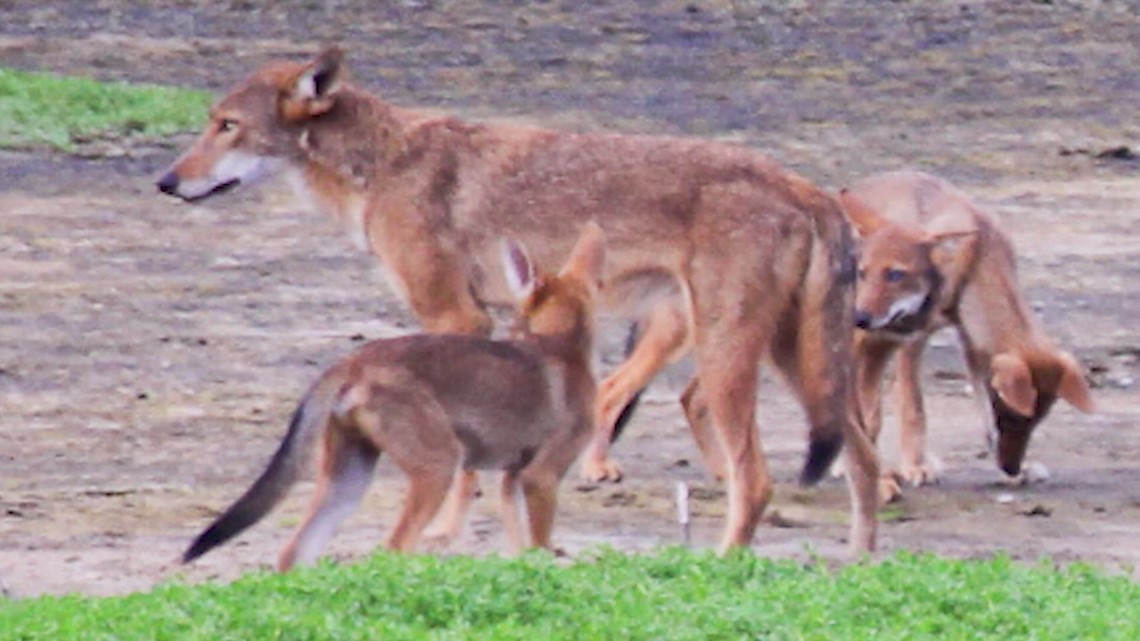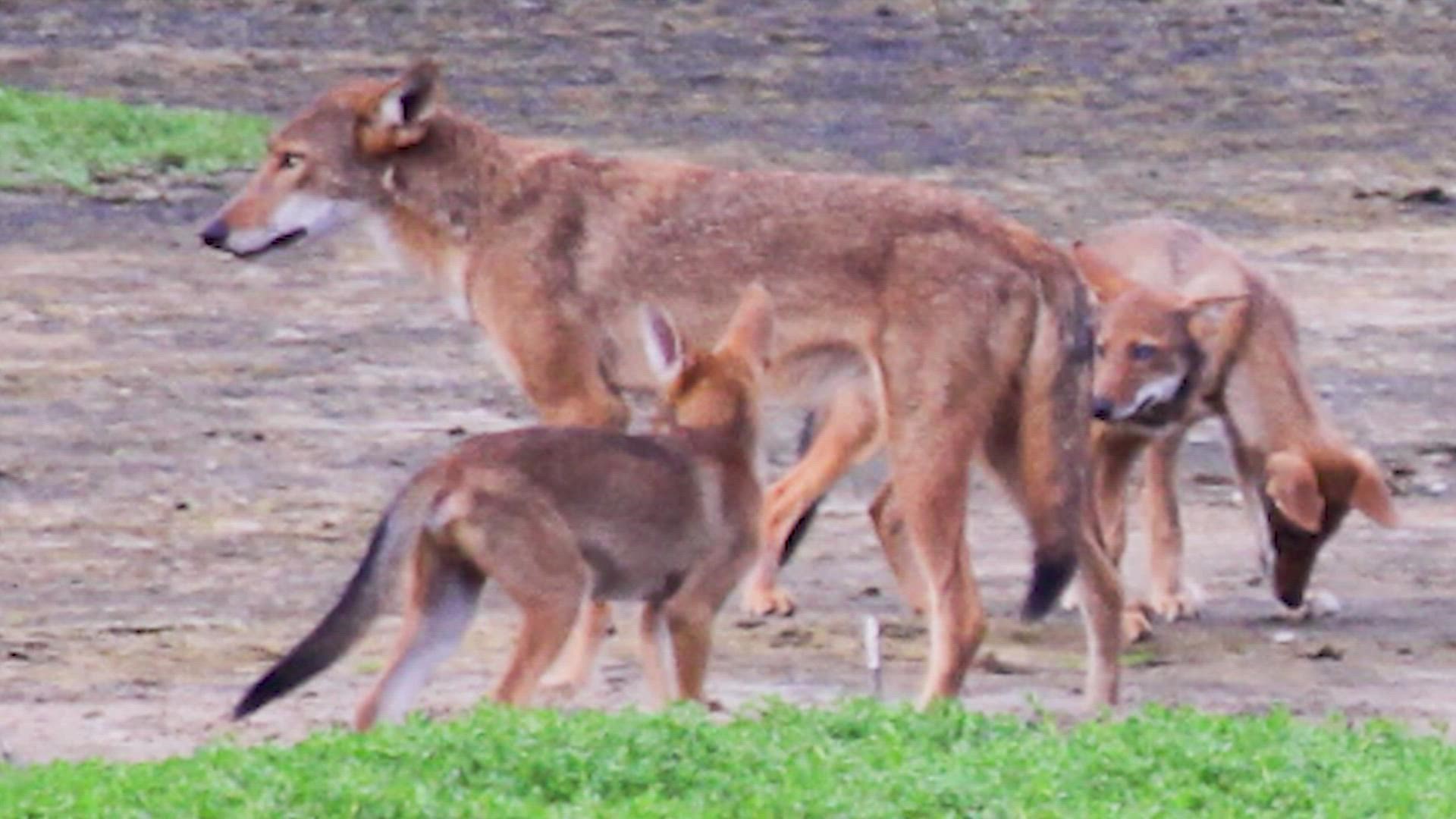GALVESTON, Texas — Scientists shared some of their findings from studying the unique canines found on Galveston during a town hall presentation Wednesday.
They say the animals are a mixture of red wolves and coyotes and say the packs on Galveston Island may hold the key to a species’ survival.
Wildlife experts have given them the name “ghost wolves” and say they’re neither full coyotes nor red wolves.
“I got to watch him hunting the sand dunes for rats,” said Josh Henderson with Galveston Island Animal Services as he showed a video he took of one of the canines. “The amount of rats an adult coyote can eat is absolutely a blessing for the island.”
The animals are among the few that remain in the wild, descendants of the red wolves that once roamed a larger part of the country.
“The red wolf is a historic wolf that existed across the southeastern United States,” said Dr. Kristin Brzeski, an assistant professor at Michigan Technological University. “Due to persecution by humans, habitat loss, disease and then hybridization with encroaching coyotes, the species was basically isolated right here.”
There are only about 20 full-blooded red wolves alive and they belong to a pack that’s closely monitored in North Carolina.
Researchers say due to inbreeding, the captive population is not sustainable.
They believe the missing genetic material that could keep the species alive may be found here on Galveston Island.
Researchers have found at least four distinct family groups of the ghost wolves living on Galveston.
The packs span the entire island, from the East End to Jamaica Beach.
Some that have been studied have around 70 percent Red Wolf DNA; others have less.
RELATED: A big nope: Check out this video of a diamondback rattlesnake calmly swimming on Texas lake
“I took the pictures, looked back at them, and I said, “These are not coyotes,’” said wildlife expert and photographer Ron Wooten when he spoke with KHOU 11 in 2019.


Until only a few years ago, nobody considered the descendants of the extinct species were still alive, much less, that they could be on Galveston.
Wooten was the first to raise an eyebrow and was determined the suspected coyotes deserved a closer look after they attacked his dog almost ten years ago.
Since then, Wooten has documented the canines with his photographs.

